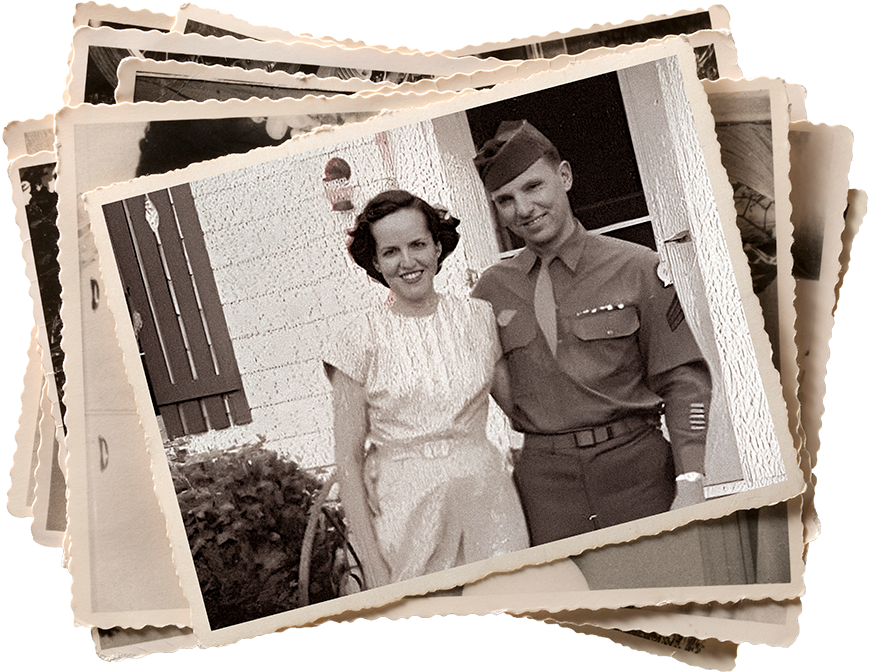I have been overwhelmed by the response to “South on Summit,” from the crowded book signings where we exchanged stories of an era gone by to the real-life questions behind my characters. Your fascination with the storyline and glowing reviews of the novel’s nostalgic depiction of small town Americana went straight to my heart. I have heard your demand for more! I am excited to announce that I have launched my next project. Work has begun to take you back to earlier times in the lives of the characters from the Summit and weave new tales as they traverse from the Guilded Age into the 20th Century.
Book Signing Brings Out Many Readers
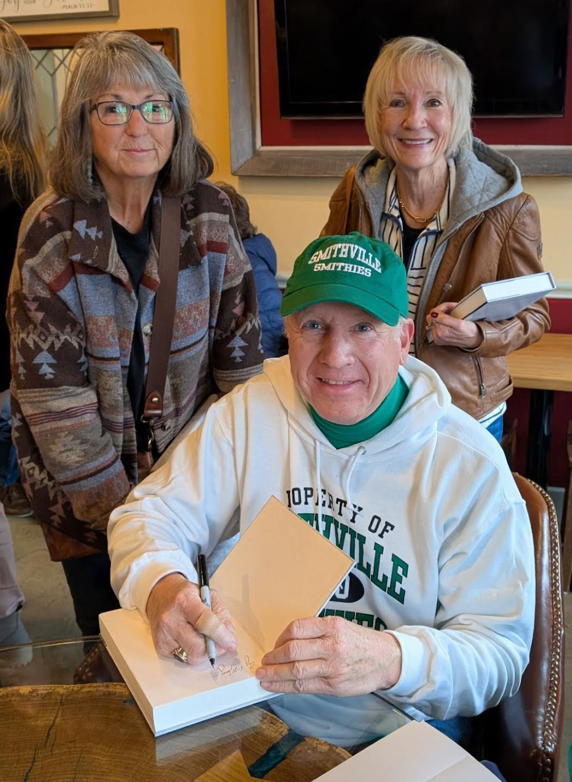 Many thanks to the Carpenter’s Cup proprietors Sara and Jon Hubacher who hosted my book signing on November 23 in Smithville, Ohio. We had a turnout that lasted for over six hours with many attendees gathering to have their books signed and catch up. Smithville is the setting for “South on Summit” and several readers who live in the area had questions about the street and how it was named, along with tales and folklore. Beth Berkey (no relation) showed up with the county baseball championship trophy that bears the name of players including Bill and Tuffy. Tim Miller, Son of Kenny (also on the team) and his Cousin Deb Rauschenberg, Daughter of Dutch (chapter 9) showed up to join our conversation and fun. A fun note is that Beth Berkey’s Father Wilbur was the team’s coach and was my Father Bill’s high school government teacher as well as mine!
Many thanks to the Carpenter’s Cup proprietors Sara and Jon Hubacher who hosted my book signing on November 23 in Smithville, Ohio. We had a turnout that lasted for over six hours with many attendees gathering to have their books signed and catch up. Smithville is the setting for “South on Summit” and several readers who live in the area had questions about the street and how it was named, along with tales and folklore. Beth Berkey (no relation) showed up with the county baseball championship trophy that bears the name of players including Bill and Tuffy. Tim Miller, Son of Kenny (also on the team) and his Cousin Deb Rauschenberg, Daughter of Dutch (chapter 9) showed up to join our conversation and fun. A fun note is that Beth Berkey’s Father Wilbur was the team’s coach and was my Father Bill’s high school government teacher as well as mine!
Reader Questions About South on Summit
Since the release of “South on Summit” and ongoing book signing events, I have fielded many questions from readers who want to know if certain events were true or fictional. Most of the events surrounding Mary Louise and Bill are accurate with some added fictional events to pull their stories together. Drysten/Trysten is a contrived character that I created and is based upon several personalities and first hand stories from WWII veterans, especially those from the 101st Airborne, Easy Company. I will share answers to frequents questions and please, send me your own!
The Death of a Brother
Chapter 2

Dale was in fact the younger brother of Mary Louise and the story of his battle with pneumonia tragically occurred. The doctor could not identify how he contracted it. It originates from a variety of organisms including bacteria, viruses, and fungi. As the family moved from one farm to another it is certainly plausible that he was exposed to any one or all of these. Pneumonia inflames the air sacs of the lungs, that can fill with fluid or pus, causing cough, fever, chills and difficulty breathing. It is very contagious and thus is why I imagined Dale isolated in his own room with only his parents and Mary Lou tending to him. They lost him within 10 days. The family referred to him as their only blond.
Sadly, Dale’s condition could have been easily treated with penicillin. The miracle drug was discovered in 1928 by Dr. Alexander Fleming a physician/scientist who found mold growing on a Petri dish of Staphylococcus bacteria. He noticed that the mold developed a ring around the bacteria, preventing it from growing. Once isolated, the challenge to produce penicillin in large quantities took years to discover. With the outbreak of WW2, the government saw the need to speed up development and brought the four largest pharmaceuticals together to ramp up production for the treatment of wounded soldiers. Production grew rapidly in 1943 and soon thereafter, massive quantities were delivered to field hospitals throughout the war zones. At home, penicillin became widely available in 1945, saving many lives.
Bill’s Reunion with HS Teammate
Chapter 11
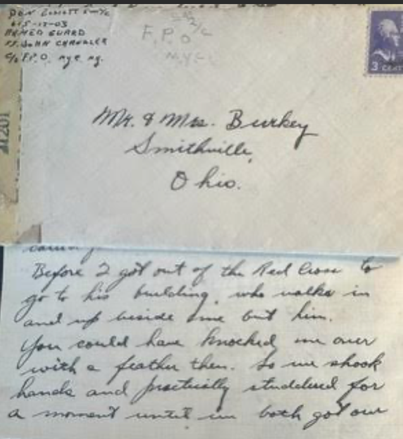
Don’s letter
What were the odds that Bill would run into a high school classmate/teammate in Leghorn (Livorno) Italy? Pretty remote, but indeed he did! When my Grandmother Prudence passed away, I snatched her treasure box full of news clips and letters from the war years. I came across one from Don Elliott written to my grandparents after visiting Bill while his ship was docked in port. Don was an armed Navy Guard on the SS John Chandler, a liberty ship that happened to deliver medical supplies to Bill’s depot. The envelope allowed me to research his ship and assignment. And as referenced in my novel, their meeting in the Red Cross building was one of smiles, handshakes, and giddiness like two boys reliving their childhood. Don was the star pitcher on their 1939 baseball team. The letter went on to tell of Bill’s intentions to wed Mary Lou when he gets home. When Don passed away in 2009 I thought it would be nice for his family to have a copy of the letter he wrote to my grandparents.
The production of Liberty Ships are often cited by historians as the tide that turned the war towards victory. FDR saw the need to speed up delivery of war supplies to our troops and ordered an emergency plan to build thousands of cargo ships. The ships were designed around a version of a 1950’s English ship that could transport 10,000 tons at a time. They were not attractive and called “ugly ducklings” by the media. The plan involved assigning the production to 18 coastal shipyards that would put together the modular units made in hundreds of assembly lines throughout the country. Instead of taking time to rivet the hulls together, they opted to weld them together. At peak production the shipyards produced one ship every eight hours. Once loaded and launched, Liberty Ships traveled in convoys of 50-60, escorted by destroyers to keep them safe from U-boat attacks. The ships traveled very slow, nearly topping 13 miles per hour at top speed and calm waters. Soon the massive amount of supplies coming from the U.S. overwhelmed the German war machine!
Drysten’s Adventure on Broadway
Chapter 16
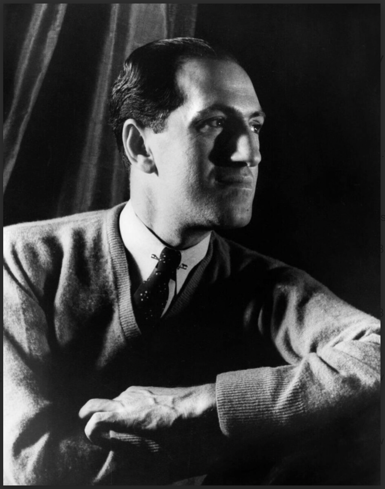
Photo of George Gershwin by Carl Van Vechten
Although Drysten’s visit to Broadway is fictional, the October location as well as the names of the characters and storyline are historically accurate. Porgy and Bess was based upon a novel, Porgy written by Dubose Heyward and published in 1925. The story of Porgy reveals the life of a disabled black man living in the slums of Charleston. It portrays his attempt to rescue Bess from the violent control of her lover, Crown. Composer George Gershwin took an interest in the novel and traveled with Heyward to Folly Beach, South Carolina to get a sense of the culture and music. This inspired him to collaborate in the creation of an all-black opera. George, his brother Ira and author Heyward worked on the lyrics. The opera songs were originally written for the character Porgy, but something happened when Gershwin had Anne Brown, a 20-year-old student from the Julliard School audition. He asked her to sing some of Porgy’s song and was so inspired by her voice, decided to assign them to the character Bess. He rewrote parts of the opera to expand Bess’s character and eventually took Ms. Brown to lunch where he announced he was changing the name of the opera to Porgy and Bess.
The opening scene of the opera is in Catfish Row, a former mansion of aristocracy, now a tenement. As Drysten watches, he immediately thinks back to his time living on Henrietta Street in Dublin (chapter 14). Clara is holding her baby and sings her sorrowful lullaby, “Summertime.” Drysten eyes start to tear as he thinks of himself as the child in the arms of his mother that he never knew. This confirmed the warning the actors gave him in the dressing room that Abbie who plays Clara would make him cry. Later when Bess, played by Anne Brown holds the baby when Clara appears to be lost in a storm, she sings it once more which causes Drysten to admit after the performance, he became embarrassed by shedding even more tears!
Readers post raving reviews of South on Summit
Amazon Customers
“What a treat it was to read this book! The author artfully blends the joys and sorrows experienced by three people who called Smithville, Ohio, home. The narrative provides wonderful detail about life during the 1930s and 1940s. Well-paced, nostalgic. With Christmas just around the corner, buy a copy for the book- or history-lover in your life!”
“Beautifully written. The author has captured the era perfectly in a flowing narrative along with exceptional dialogue and storyline. Great read for anyone interested in the 40’s time period.”
“South on Summit is a very well-written novel. I enjoyed reading it. I know the area and recognize several names. According to the stories I heard from my parents, the description of life in the 1930s and 1940s was very accurate.”
“Humor, romance, and sorrows keep the reader’s attention. The war stories are heartbreaking and eye-opening sorrow.”
“Tim Berkey has artfully captured a small town and an era in a way reminiscent of Norman Rockwell. An engaging read to be sure.”
“South on Summit is a delightful and sometimes sobering read as the multiple story lines unfold. I smiled and recognized the descriptions of childhood freedom that small town America enjoyed in the first half of the 20th century. Tim Berkey’s character development is so engaging and the historical depictions and challenges of WWII are detailed and eye-opening! I recommend this book for lovers of historical fiction.”
Goodreads
“South on Summit is a captivating novel that weaves together multiple storylines, each with historical context, compelling characters, and an exploration of life during World War II balancing moments of childhood innocence and freedom with the harsh realities of a world at war.
The novel’s depiction of small-town America is particularly nostalgic, evoking a simpler time. It’s a heartfelt reminder of a world that feels both distant and familiar.
The historical elements of the novel provide a vivid portrayal of the challenges faced during WWII, not just on the battlefront but also at home, as families and communities navigate the sacrifices and uncertainties of the war.
For historical fiction enthusiasts, South on Summit is a book that will make you smile, reflect, and perhaps shed a tear as you journey through a tumultuous yet transformative period in history.”
Post Your Review!
People who read historical novels are always searching for their next book. Some go to Amazon and read reviews while others reach out to a major site called Good Reads where both authors and readers connect. Several of my readers of South on Summit have posted short reviews on Amazon. This is rather easy to do and only takes a minute or so. It’s the same process as you would use in rating and reviewing any product offered on their website. Here is the link for South on Summit: Amazon –
Scroll down to: Review this product where you can read other reviews and write your own!
GoodReads
Goodreads.com is a wonderful site for readers as well as authors. Many readers use it to find the next book in their favorite genre. Membership is free. Once you join you can search for current books and read the reviews posted by other readers. Just like Amazon, you can rate a book and post a short review.
Link to join Goodreads: https://www.goodreads.com/user/sign_up.
Then enter “South on Summit” in the search box and it will take you here:
https://www.goodreads.com/book/show/220446504-south-on-summit?ac=1&from_search=true&qid=u9B7e8IVTA&rank=1
Scroll down to read reviews and then rate and write your own.
Thank you! Your kind effort will expose my book to more readers!
Tim Stops by Christmas in the Village
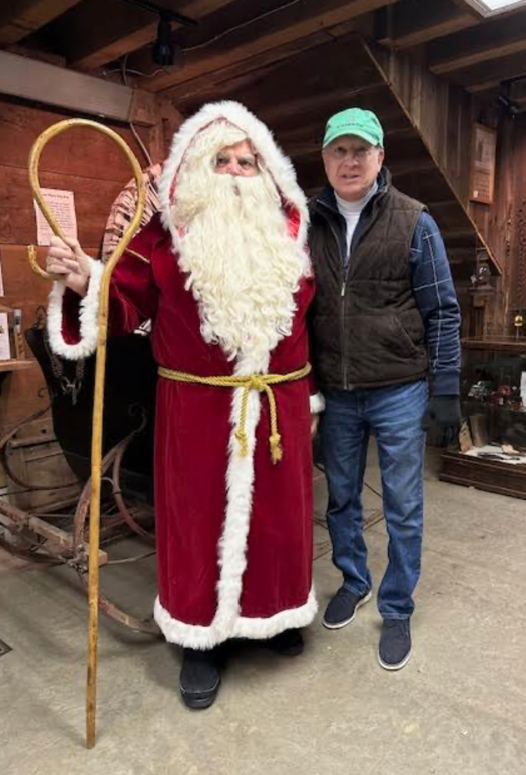
Tim Stops by Christmas in the Village
I spent my birthday traveling back to my hometown of Smithville to attend Christmas in the Village in the historic Pioneer Village, managed by the Smithville Community Historical Society. My good friend Jeff Carr is the president and each year suits up as Santa. He is a key player in making sure that the history of our hometown is preserved and advanced for all to enjoy.
Learn more by searching their site: sohchs.org
My Next Book

As members of this newsletter you get advanced notice of my work. I heard from several readers who encouraged me to write either a prequel or sequel to “South on Summit”. Some want the story to continue into the future. Others are intrigued with what came before. Bill’s family has interesting history, especially with his adoption. And my DNA results show a strong links to Switzerland, England and Northwest Europe.
One of my goals in writing “South on Summit” was to capture the culture of America during the challenging years of the Great Depression and World War II. And Drysten’s family story looked back on early Ireland and the great migration of Europeans to America beginning in the late 19th Century. Also of interest to me is the transition that occurred as the world moved from the Gilded Age to the growth of America as a global force via the Industrial Revolution.
The turn of the 20th century included the Spanish-American War, the Boxer Rebellion, the roots of the women’s suffrage movement, the massive industrialization including the development of automobiles. And of course, World War I underscored America’s need to build and maintain a strong military. The presidential election of 1920 drew in six contenders who wanted to shape the future of the country.
So my decision is to take a deep dive into research for my next book, covering the late 1800’s up through the stock market crash of 1929. This will require many months of careful examination of primary and secondary sources of major events as well as history of Wayne County life during those years. Yes, we will return to the Summit and the stories will weave between the early lives of people from my first book along with new characters. I have not assigned a title to the book. I am also working on some other writing projects parallel to this and will be making future announcements. As a newsletter member, you will be the first to know!




